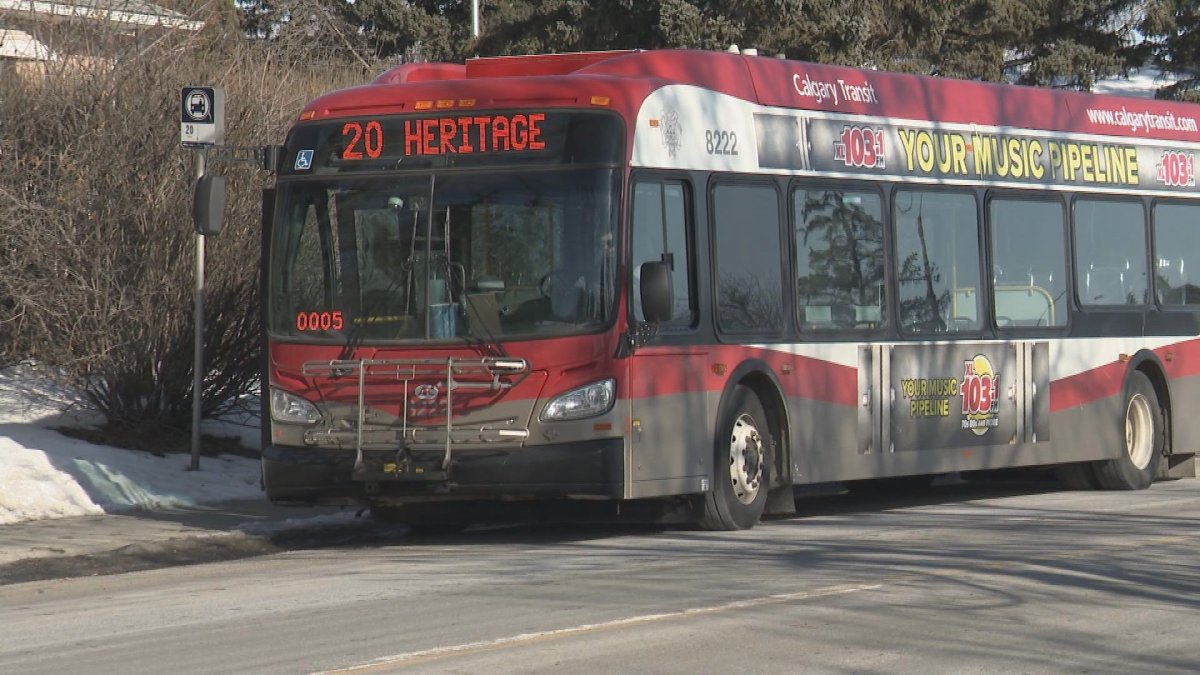Calgary Transit is ready for the second wave of the coronavirus pandemic, according to city officials.

And that preparedness is based on what the transit service learned in the first wave of the pandemic.
“A lot of the things we did during wave one were scaling service to save money, but also having enough service out there to support public separation and make sure they’re running a safe service,” Doug Morgan, acting general manager of transportation, told the city’s transportation and transit committee Wednesday.
“We have no confirmed cases even from the start of the pandemic that occurred on transit, so it has been a safe management.”
The committee heard an update on ridership numbers, which have steadily increased to just over half of pre-pandemic levels after dropping to a low of less than a fifth at the onset of the pandemic.

“So we’re monitoring — very carefully — and we have thresholds where we say, ‘OK, if it drops below a certain level, maybe we do a little bit of service reduction in response to that.’”

Get breaking National news
Those thresholds include infection rate and the number of new infections within Calgary.
Morgan also said health measures used in the spring-like rear door boarding, plexiglass barriers for drivers, and separating passengers can be implemented “within a day or two’s notice.”
But Mike Mahar, president of ATU 583, which represents transit workers, says it’s prudent to put those measures in now.
“We’re experiencing what they refer to as crush loads on a daily basis,” Mahar told Global News. “And I know that the city’s concerned about a budget and having to put the money out. But I think that best practice would be to add some additional service to lighten those loads.”
‘Crush loads’ refer to buses with standing room only that have to leave riders at stops without taking them on.
“I don’t think it’s realistic to suspect that, because people are wearing masks even when they’re literally rubbing shoulder to shoulder on the buses, that there isn’t an extremely high risk of contracting COVID-19 in that environment.”
Mahar added that, with increasingly cold weather coming, opening windows to allow for increased circulation isn’t an ideal situation.
“There are some best practices that we want put in place with regards to improved filtration system and identifying the best method of circulating the air through those buses,” Mahar said Tuesday.
Currently, masks are required on public transit under the city’s bylaw, but buses and trains are back to full capacity.

Ward 6 Coun. Jeff Davison — who chairs the transportation & transit committee — said the city has to balance public health with the economic costs of running transit during the pandemic.
“We know a lot of our essential workers rely on transit to get them to the jobs we require as citizens for them to support,” Davison said Tuesday. “So it’s a balance, but it’s something that we are actively evolving as the story unfolds.”
Calgary Transit has been operating at a loss during the pandemic, as half of its operating costs come from tickets and the other half from the city’s budget. On July 22, Calgary Transit projected a revenue gap of $97.3 million for the latter half of 2020 and projections submitted as part of the upcoming budget adjustments peg losses to be at $35.7 million for 2021.
“Some of the difference between a second wave and a first wave is that you have a lot more data on a second wave,” Davison told Global News.
“And so we’re really trying to make a data-based decision as to where we would keep transit service in full operation versus scale some of that back.”
The committee also heard an update on the e-scooter pilot, showing that 955,783 trips were taken during the May to October trial. Road traffic volume is back to 92 per cent of pre-pandemic levels, but without as big of a spike during the morning rush and instead more volume spread throughout the rest of the day.
And the committee heard an update on car-sharing service Communauto’s operations in the city between Sep. 19 and Oct. 31. In the 26 square kilometre operating area, 5,745 trips were taken with Communauto, averaging 146 per day in October.
- Calgary’s termination of Green Line adds extra frustration for expropriated Eau Claire residents
- Home ownership feels out of reach for many in Calgary
- Calgary police searching for sexual assault suspect after attack at swimming hole
- Kananaskis council planning fireguards to protect from wildfire threat








Comments